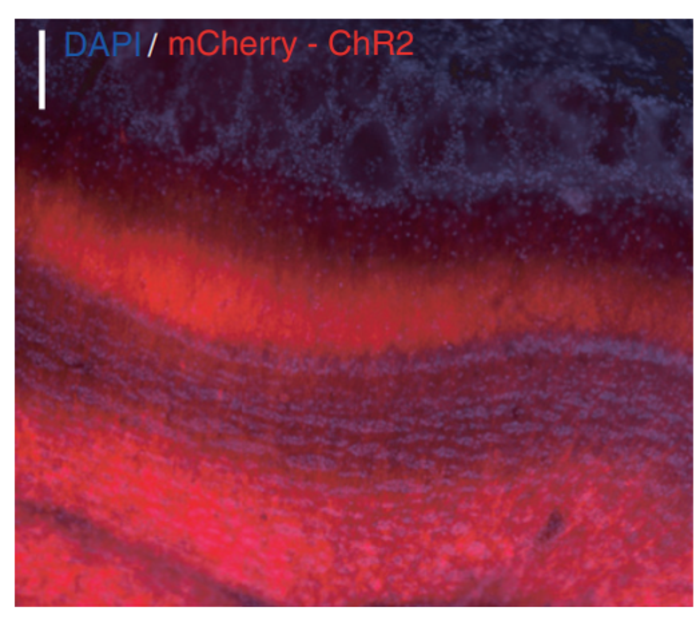In the early 20th century scientists began to record brain activity using electrodes attached to the scalp. To their surprise, they saw that brain activity is characterized by slow and rapid ascending and descending signals which were subsequently called “brain waves”.

Credit: Tal Dalal
In the early 20th century scientists began to record brain activity using electrodes attached to the scalp. To their surprise, they saw that brain activity is characterized by slow and rapid ascending and descending signals which were subsequently called “brain waves”.
Since then, brain waves have been studied intensively in the context of their involvement in processing and transmitting information between different regions of the brain. In the healthy brain, a change in wave intensity has been observed in the context of a wide range of cognitive activity such as memory and learning. In addition, many studies have shown that changes in wave intensity and frequency indicate epilepsy, autism, or neurodegenerative diseases such as Parkinson’s and Alzheimer’s. Alzheimer’s disease, for example, is characterized by a sharp decrease in wave intensity at a certain frequency, while epilepsy is characterized by a very sharp and abnormal increase in wave intensity at a different frequency.
It is currently known that brain waves express synchronized activity of tens of thousands of nerve cells (neurons), so a normal increase in wave intensity expresses synchronized activity of different groups of neurons for the purpose of transmitting information. But why and how do these waves contribute to the proper transmission of information in the brain?
A new study conducted by doctoral student Tal Dalal in the laboratory of Prof. Rafi Haddad, of the Gonda (Goldschmied) Multidisciplinary Brain Research Center at Bar-Ilan University in Israel, focuses on this key question. In the study, published in Cell Reports, the researchers altered the level of synchronization in the area of the brain that transmits information. They then examined how this affected the transfer of information and how the area of the brain that received the information understood it.
The research focused on brain regions that are part of the olfactory system, or sense of smell, which is characterized by strong brain wave intensity. A particular type of neuron in this region is responsible for creating synchronized brain wave activity. To increase or decrease synchronization, the researchers used optogenetics, a method that allows neural activity to be turned on and off, just like a switch, by projecting light flashes over the brain. In this manner the activity of the synchronizing neurons can be turned on or off to examine how changing the synchronized activity of many neurons in one region affects the transmission of information to the next region, which reads the information.
The primary or “upstream” area manipulated by increasing or decreasing synchronization, is where initial processing in the olfactory system takes place. From there the synchronized or non-synchronized information, depending on the manipulation, is transferred to the secondary or “downstream” area of the olfactory system responsible for higher level processing.
The researchers found that increasing synchronization of neurons in the upstream brain region that transmits information led to a significant improvement in transmission and processing of the information in the downstream region. Conversely, when synchronization was decreased, the representation of the information in the downstream region was impaired.
An unexpected discovery also occurred. “We were surprised to find that activating the synchrony-inducing neurons also caused a decrease in the overall activity level in the upstream region, so we would have expected less information to be transferred to the downstream region. But the very fact that the output from the upstream region is synchronized, compensated for the overall reduced activity and even improved the transfer of information,” explains Dalal.
The researchers concluded from this the importance of synchronized brain activity for information transfer and processing. When thousands of neurons are synchronized, the transmission of information in the brain is done more powerfully and reliably, compared to a situation where the activity is asynchronous and each neuron operates independently regardless of the group. Dalal says this can be likened to a demonstration of tens of thousands of people in a public square compared to demonstrators scattered in different places. The power of shared and synchronized activity is immense compared to independent, non-synchronized activity.
This finding may explain why a decrease in synchronized activity, which expresses a decrease in brain wave intensity, may result in cognitive impairment in neurodegenerative diseases such as Alzheimer’s. “To date, studies have shown a correlation between decreased synchronicity and neurodegenerative disease, but haven’t shown why and how it happens,” says Dalal. “In our study we’ve shown how synchronization contributes to the transmission and processing of information in the brain, and this may be the reason why we eventually see cognitive impairment in patients.”
The study by Dalal and Prof. Haddad offers new options for treating neurodegenerative diseases. It’s possible that abnormal brain activity will be corrected in the future through specific stimulation of certain neurons, such as the flashes of light used for manipulation in this study, to restore synchronization to the level required for normal brain activity.
Journal
Cell Reports
DOI
10.1016/j.celrep.2022.110693
Article Title
Upstream synchronization enhances odor processing in downstream neurons
Article Publication Date
19-Apr-2022




